Netherlands
A long weekend at the beginning of October. A few days off. Outside: Golden autumn with bright blue skies, sunshine and pleasant temperatures. Inside: We feel like traveling. One last getaway before the long winter sets in. We calculate our budget, consult Google Maps and check the weather forecast. Our destination: the Netherlands. As always, we want to see as much as possible as cheaply as possible. This time the challenge is particularly great. Traveling an entire country in less than four days on a low three-digit budget – is that possible?
Chris has never set foot in Germany’s neighboring country. Vany’s only trip there was to Amsterdam and it was fifteen years ago. The journey is not too far and the weather forecast is good. Let’s go!
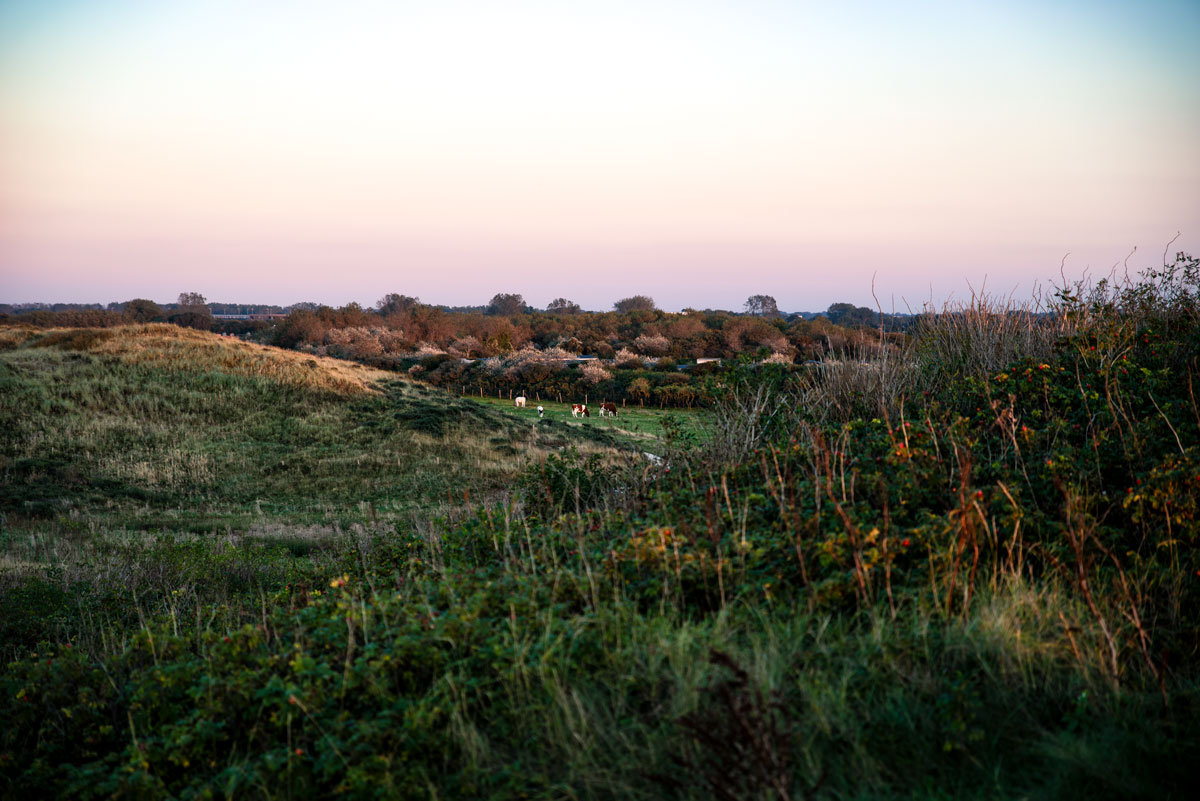
In the late afternoon, we navigate through traffic jams and rush-hour traffic on the German autobahns along the Ruhr. We cross the border into the Netherlands on a small country road. It’s already dark and the temperature is in the lower single digits. We spend the night on a beautiful campsite on a wide meadow. There is only one other camper besides us. We would have loved to enjoy this solitude with summer temperatures and a glass of wine in front of the roof tent. Instead, it’s time for onion look, hot water bottles and a sleeping bag.
The first morning. We drive to Doesburg for breakfast and are immediately impressed by this charming little town. Cute brick houses, sleepy alleyways, good-humored friendliness and idyllic river bends that wind around the town. Behind them, green meadows and dairy cows. Above it all, a blue sky and a warming autumn sun.

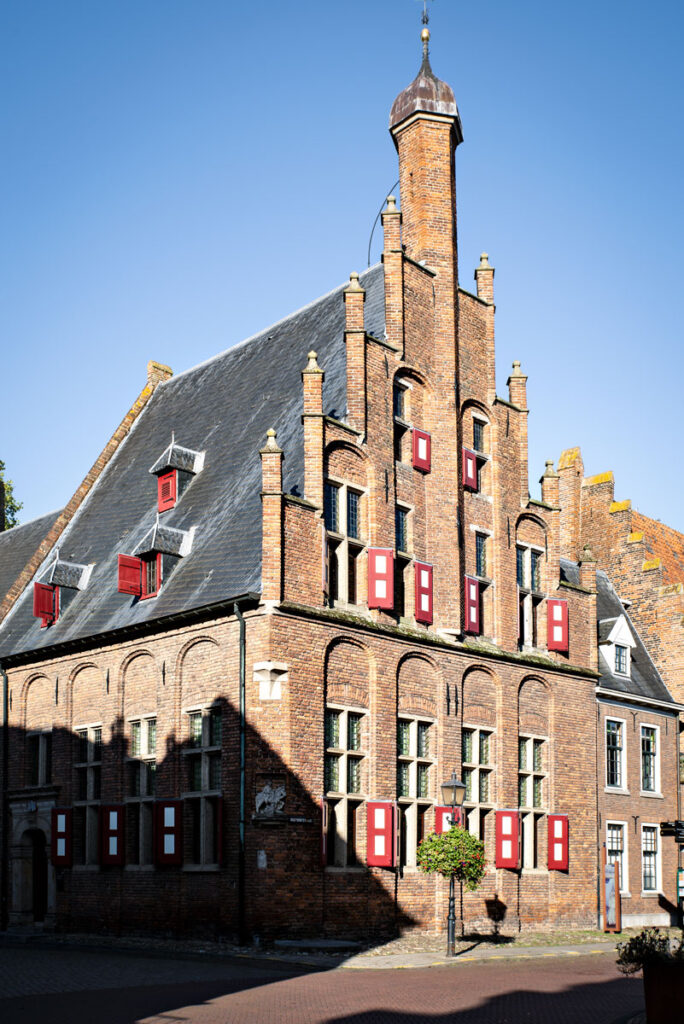
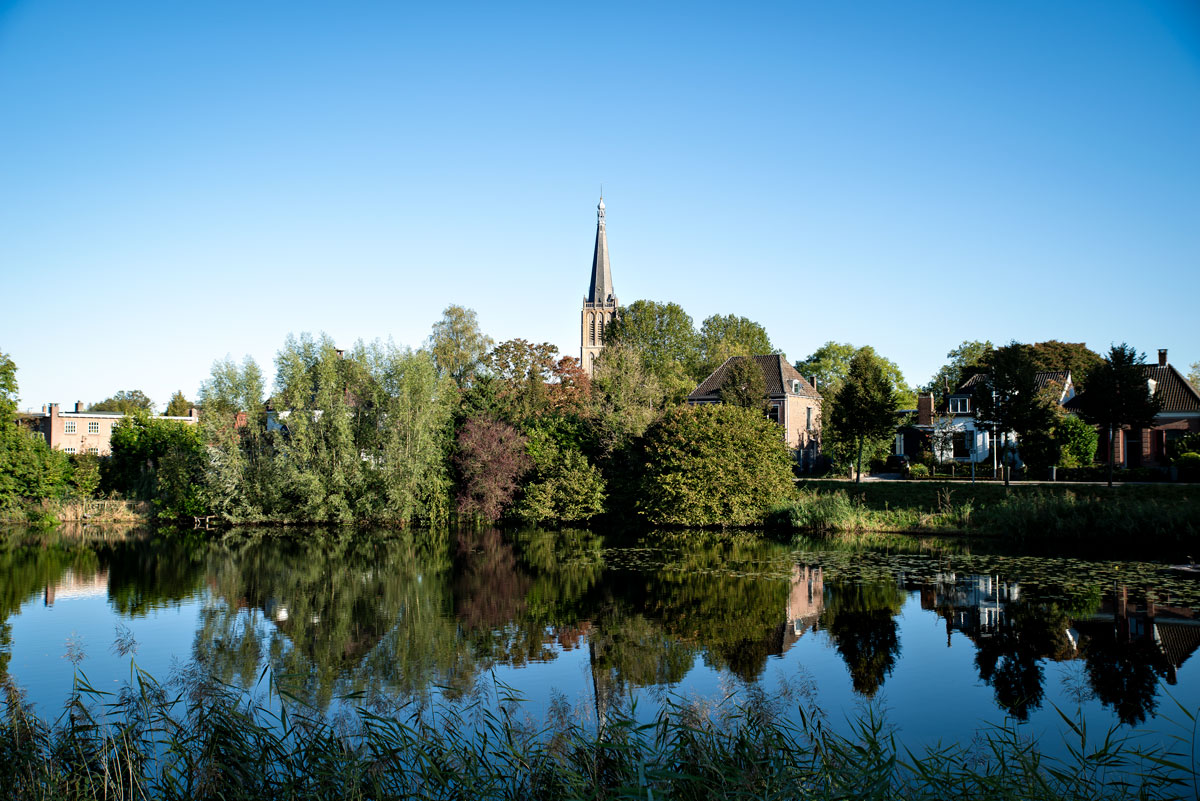
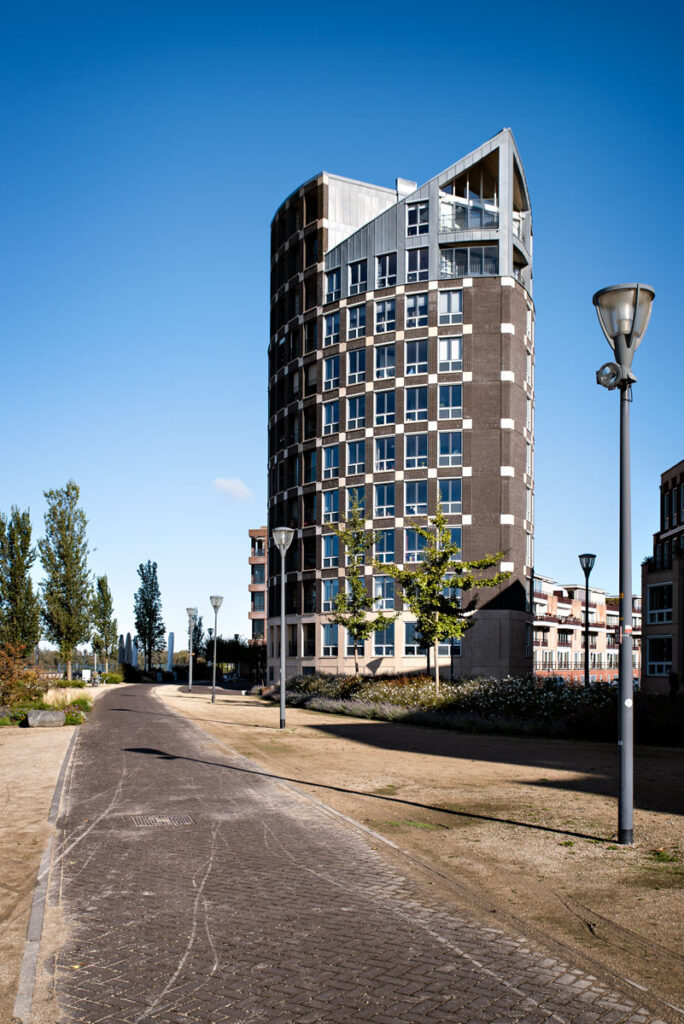

Next stop is the student city of Utrecht. While in German cities there are politicized debates about every cycle lane and the result is a compromise that is not fair to either car drivers or cyclists, Utrecht proves without much fuss how the traffic turnaround can succeed on a small scale. Wide cycle paths reduce the traffic space for cars to a narrow lane, expensive parking spaces displace long-term parkers and cycle lanes bring deceleration and quiet retreats for residents. Overall, the city gains in quality of life. The city center is crisscrossed by canals, which are typical for the Netherlands. Bars, restaurants and creative stores have sprung up around them. People sit together in the cafés – young and old – they communicate, they laugh, they enjoy the day.
We reach our campsite in Amsterdam before it gets dark. As convinced wild campers, it is always a challenge to spend the night in close proximity to motorhomes. Wild camping is not an option in the Netherlands (not with a roof tent) and in view of the high hotel prices, the campsite is a very cost-effective alternative.
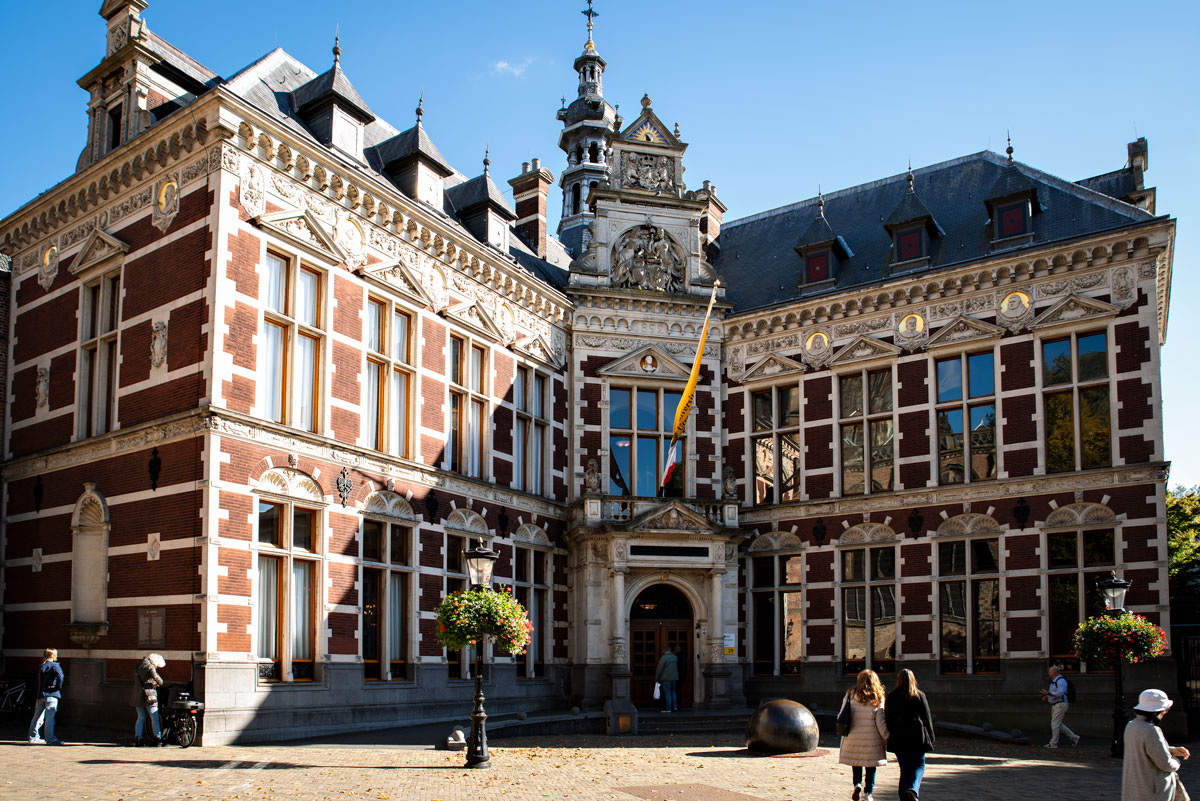
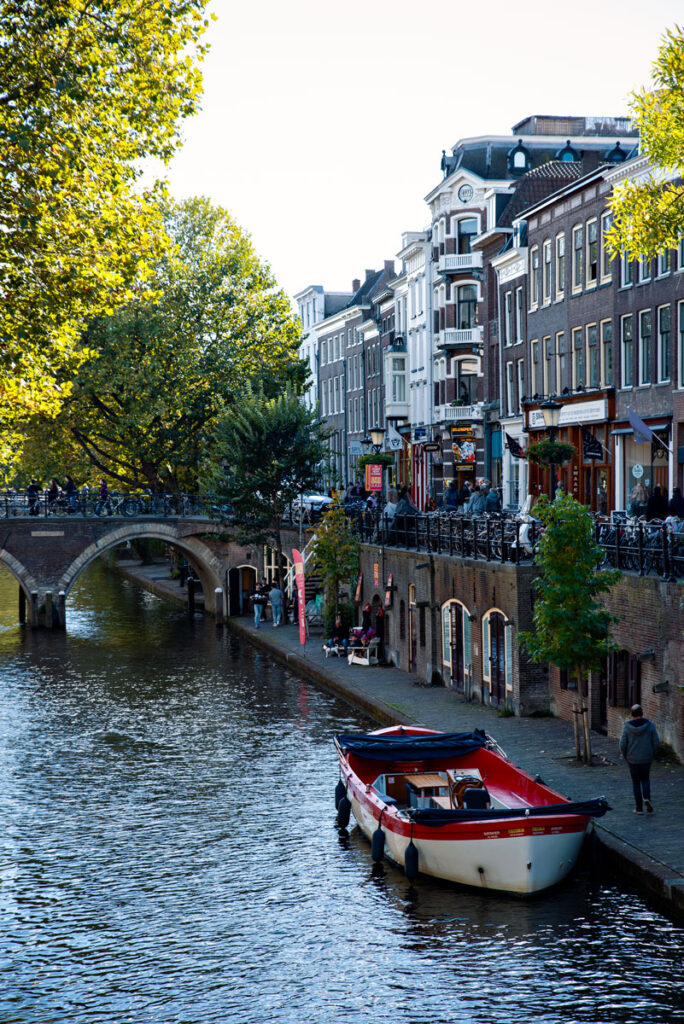
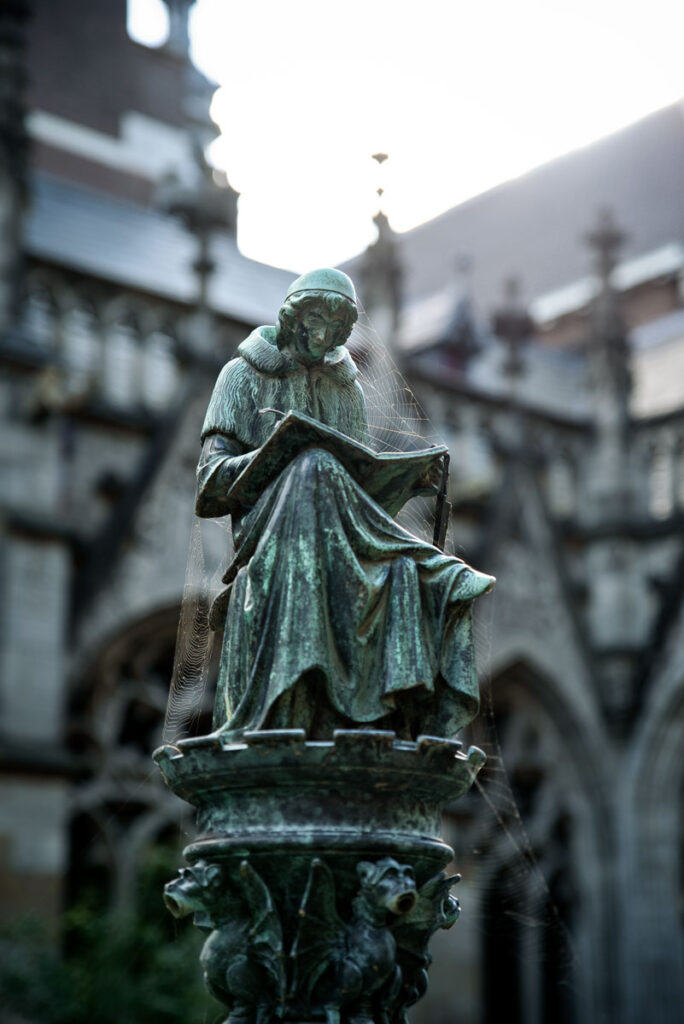
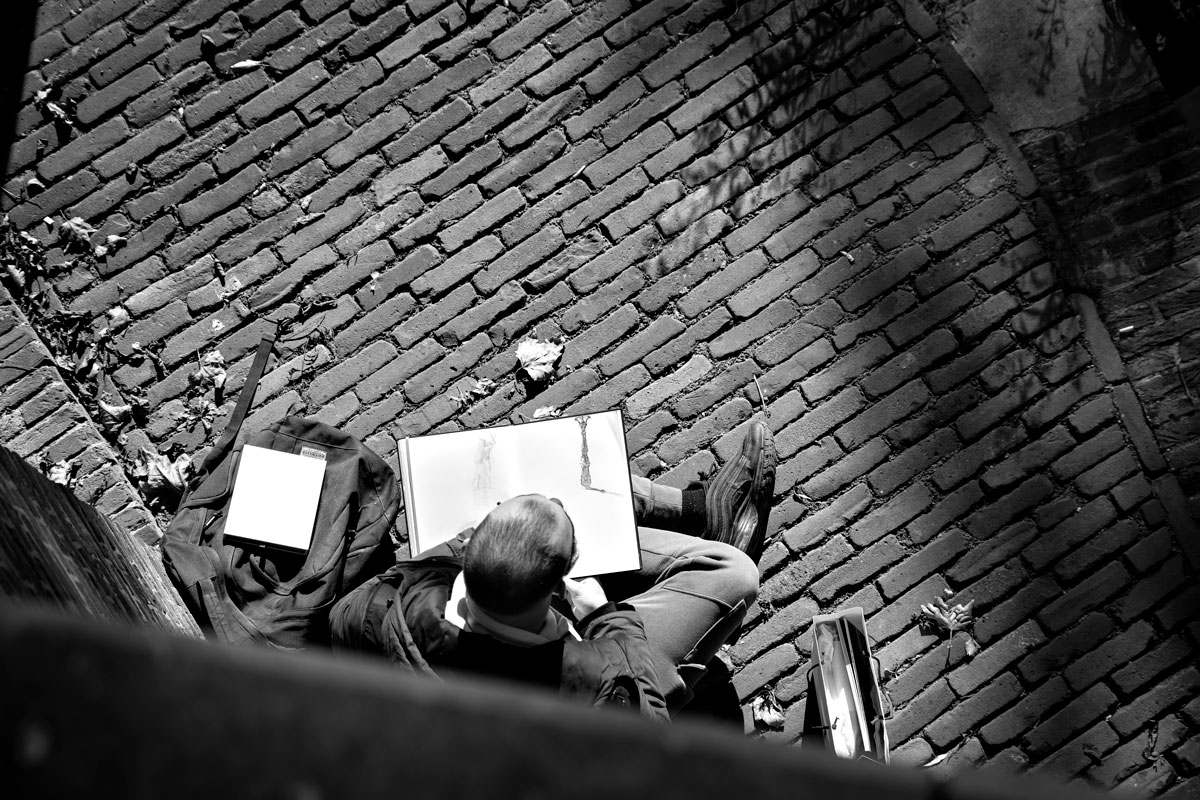
The second day – picture-perfect weather again. We take the train into the heart of Amsterdam. A huge cruise ship is moored at the harbor. The city itself is a maze of canals, bridges and small streets. We stroll past countless alternative cafés and studios, cannabis stores and hordes of parked bicycles. There is something to the cliché of Amsterdam as a city of stoners: the smell of cannabis wafts into our nostrils again and again, and we encounter mostly men proudly displaying their rolled, oversized joints like a symbol of phallus.
Amsterdam is a city for everyone: there is a business look and a brash non-conformity here. Families with children, hordes of stag parties, old married couples and teenagers on their first trip without adult company – they all find what they are looking for in Amsterdam. We also like the city’s laid-back atmosphere once we have left the crowds of tourists in the station district behind us. Come as you are, that’s Amsterdam.
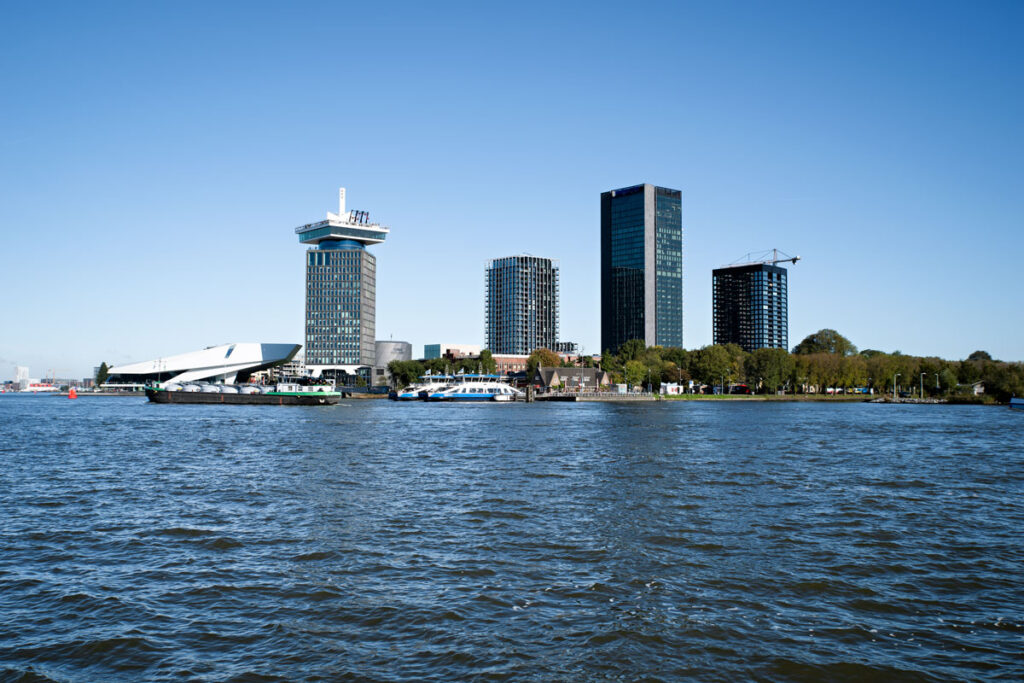
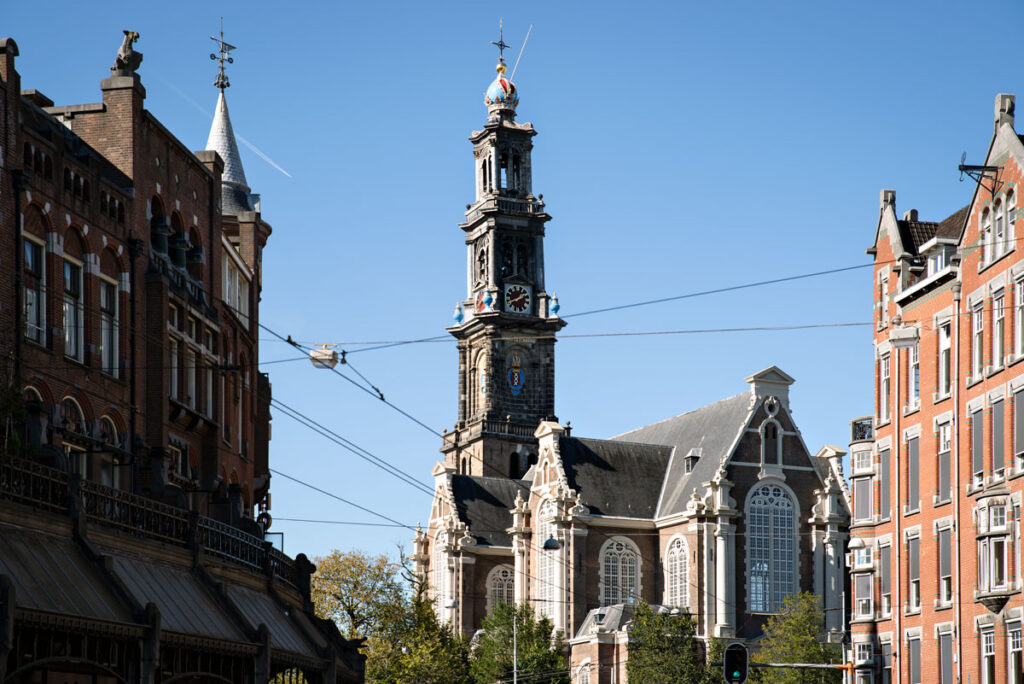
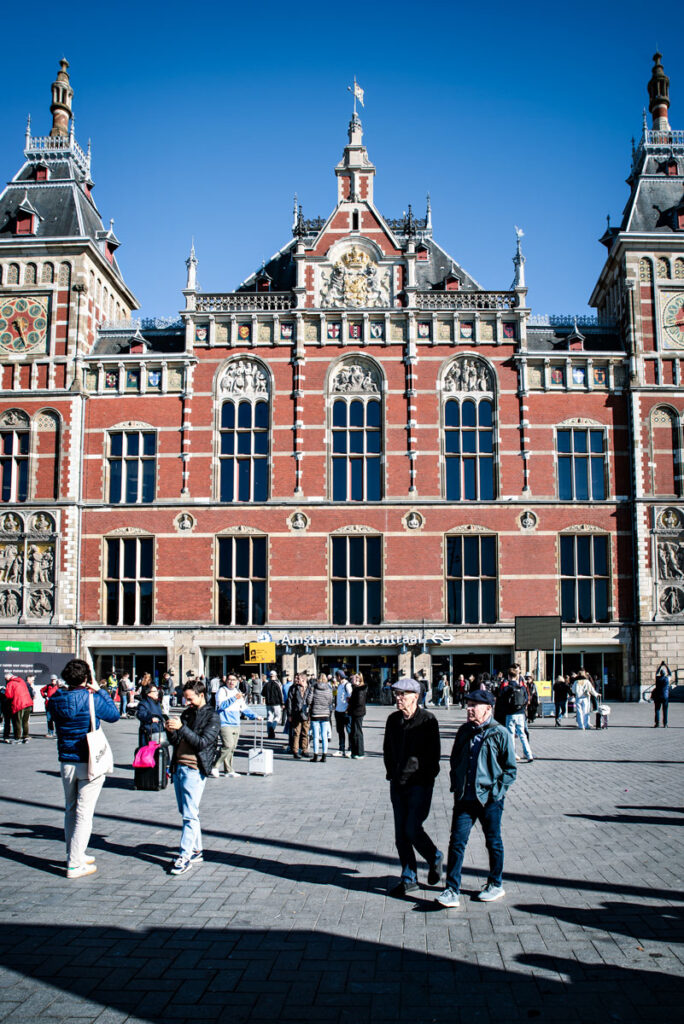
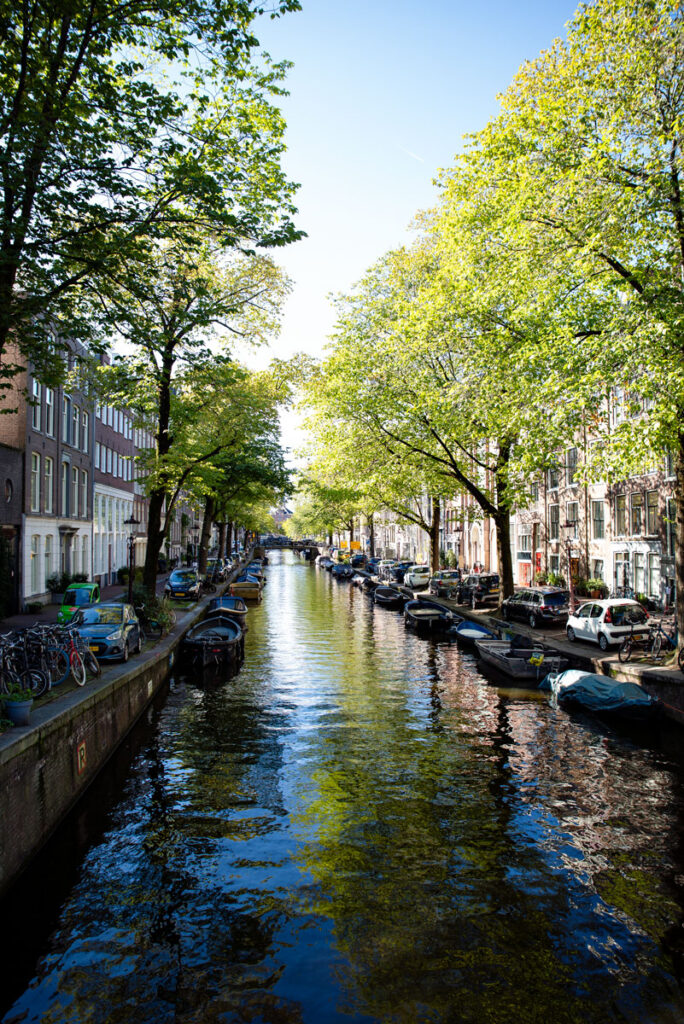
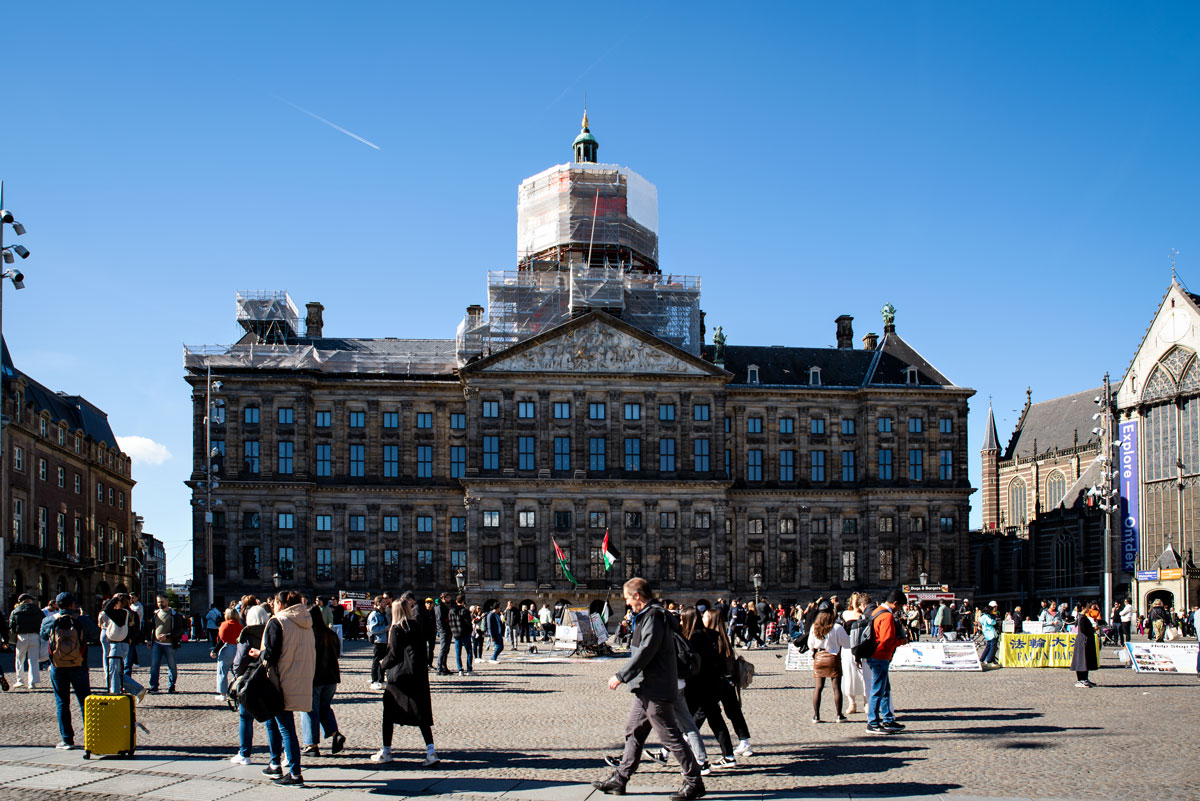
The Volkspark is a green meeting place. Spacious grassy areas, water landscapes, cafés and a beautiful children’s playground. Art installations here and there. A homeless man lives in a hollowed-out tree trunk. A woman does yoga in the fall sun. A man sits on the steps of a statue, lost in thought and smoking pot. Dogs and children run around between the trees. The park benches are occupied by people holding their faces up to the sun once again.
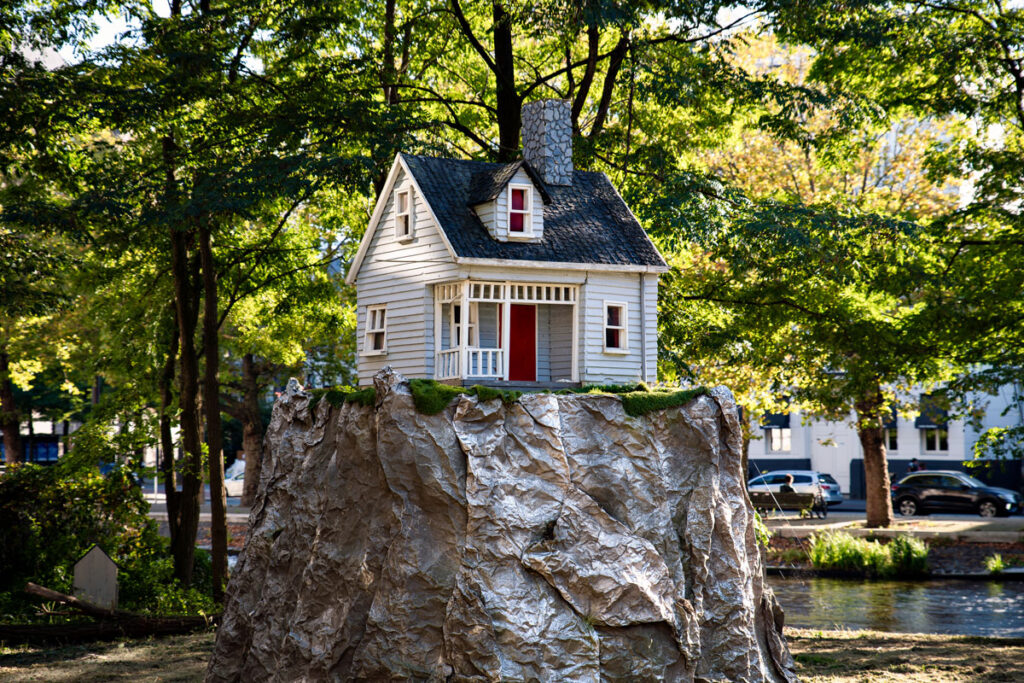
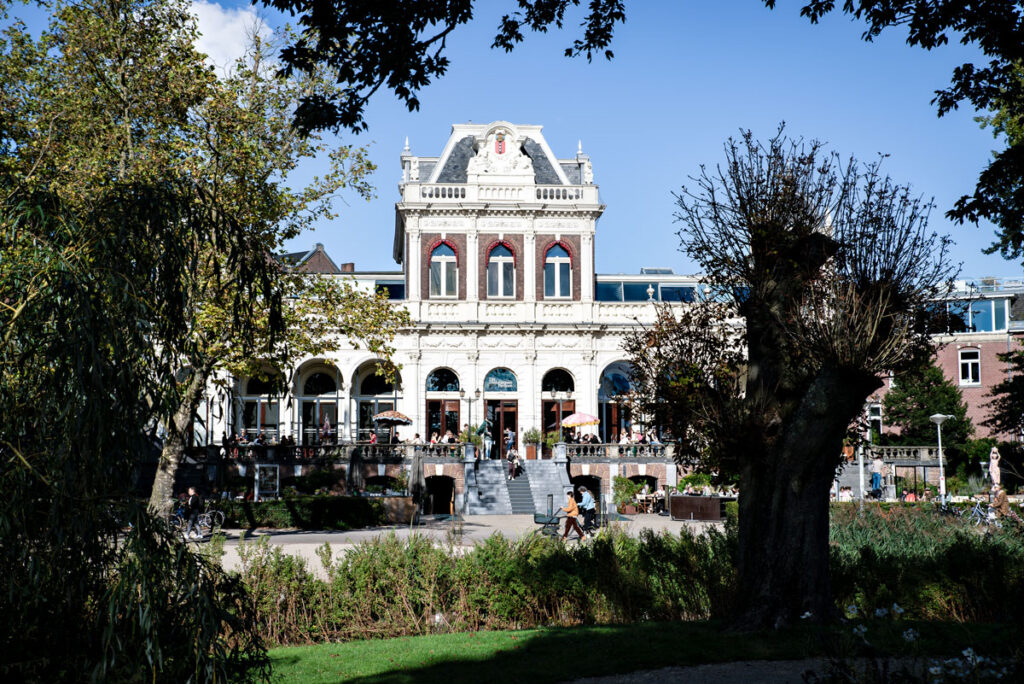
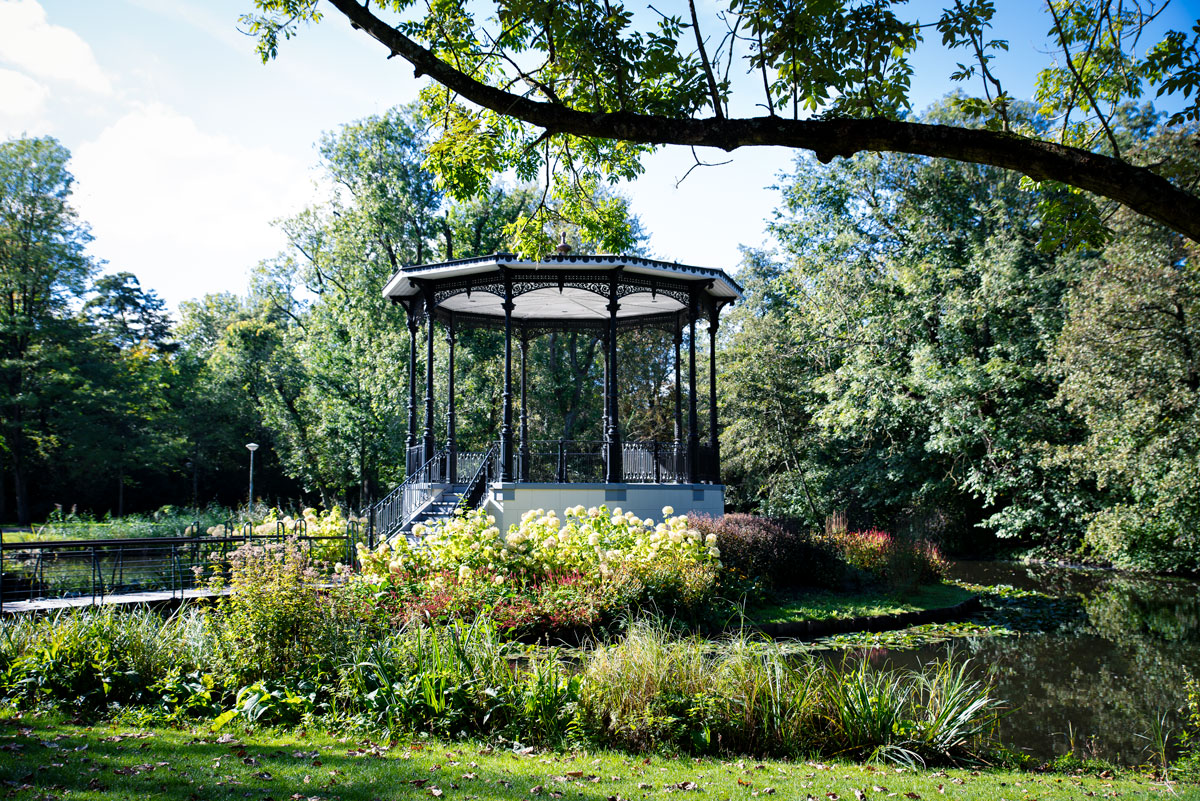
At the beginning of October, the sun is already low in the afternoon. The houses cast long shadows on the narrow streets of the city. The Nieuwe Spiegelstraat is one such street. It is full of antique and art stores. Golden picture frames, heavy leather volumes, worn wood. Maps on which vast regions of the world are an undiscovered mystery. We stroll past flower stores selling a colorful, fragrant jumble of different types of tulips and a Chinese temple.
Our extensive tour ends in Amsterdam’s famous red light district. With the last rays of the sun, the first sex workers prepare for their shift. They present their bodies in small cabins with shop windows facing the sidewalk. Of course, photography is strictly forbidden. In any case, most of the shop windows are still unoccupied – here and there the large windows are cleaned before the evening. It is still the day tourists who stroll curiously through the district. In a few hours, the bars and shop windows will be occupied. The darkness will transform the innocent atmosphere of the day.
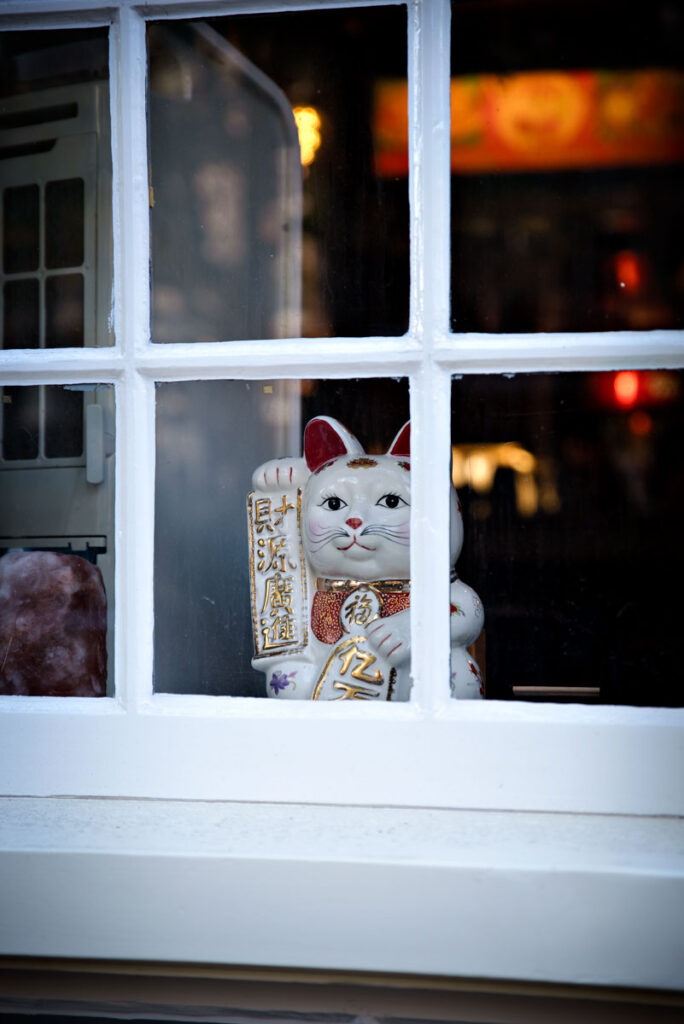
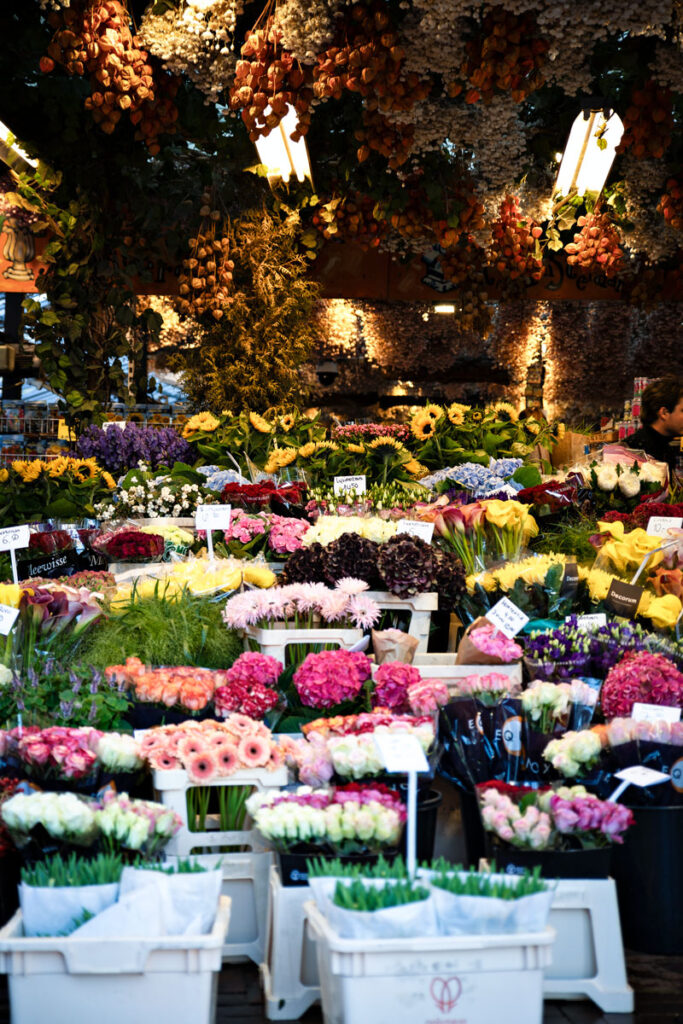
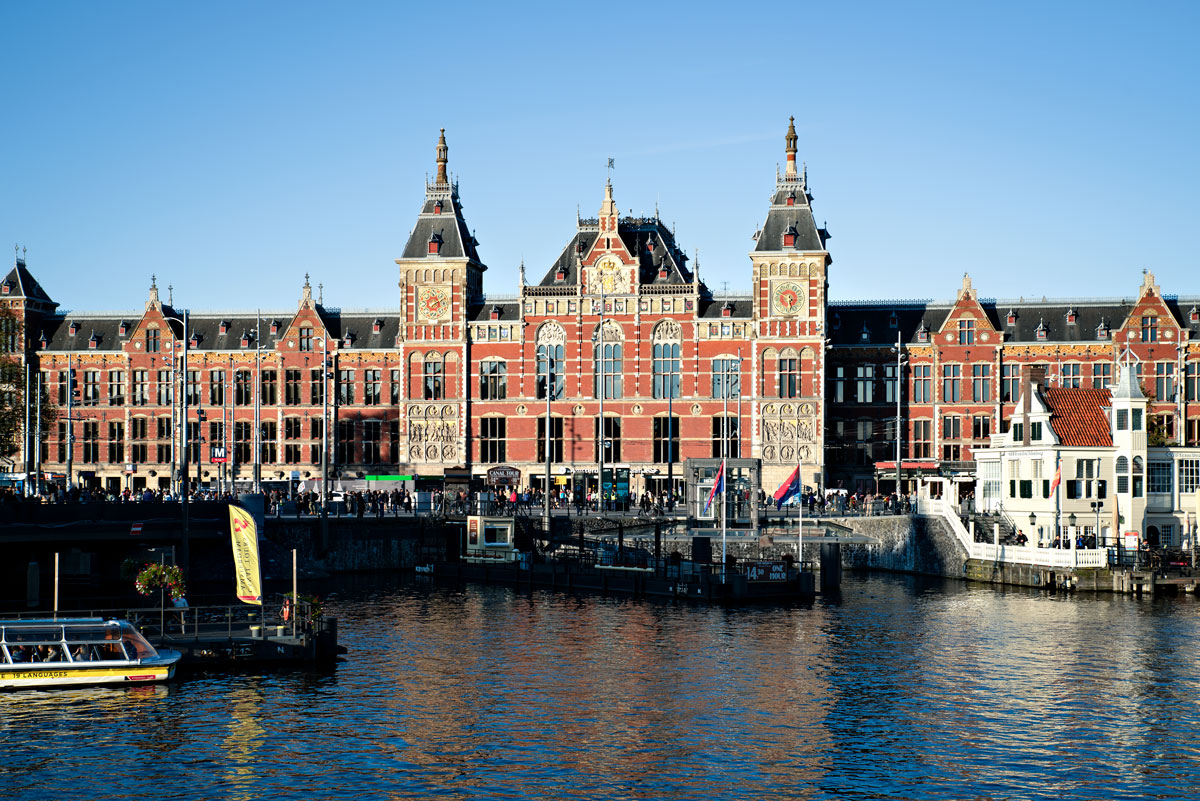
The third day and sunshine again. We have breakfast on benches wet with morning dew in temperatures just above zero degrees. On the drive to The Hague, we turn the heating in the car to the highest setting. It’s Saturday, but we got up early – so it’s still quiet in The Hague.
While Utrecht impressed us with its alternative and artistic charm, The Hague is a completely different city. A certain bubble has developed here thanks to various EU institutions and international organizations. It is multilingual, excellently educated and globally positioned. At lunchtime, we visit a playground with our little man and immerse ourselves in that bubble for a moment. A children’s birthday party is being celebrated. The guests are smartly dressed and speak Dutch, German and English to each other. A multicultural get-together, which is not unusual here. A city of academics and high-ranking civil servants. The Hague is tidy, orderly, presentable. A city by the sea, a city in Europe. A city that is featured on the television news.
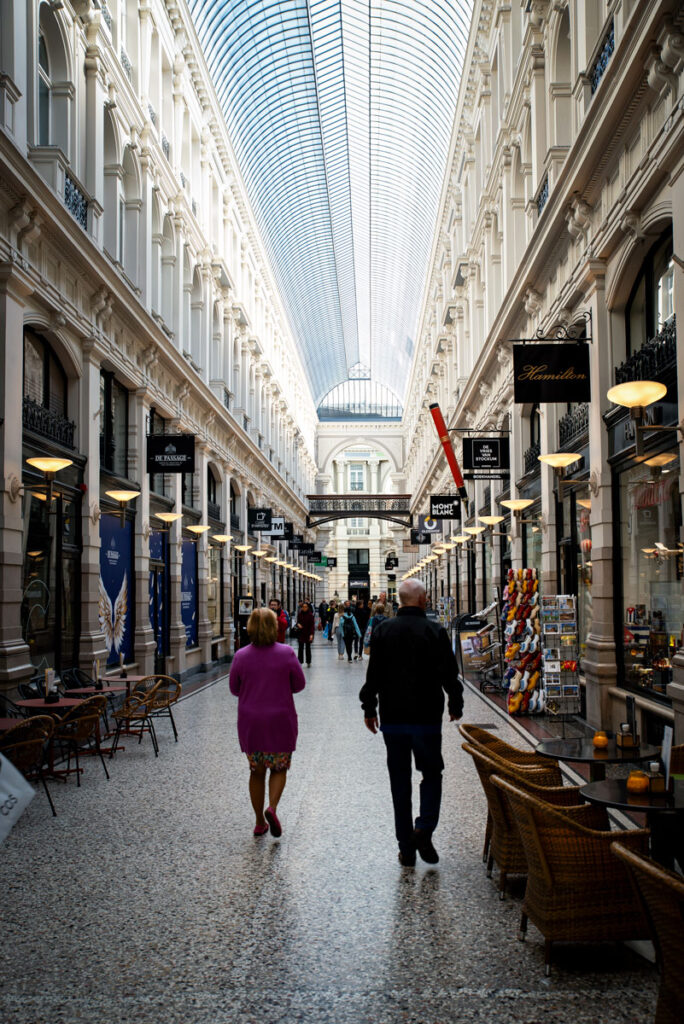
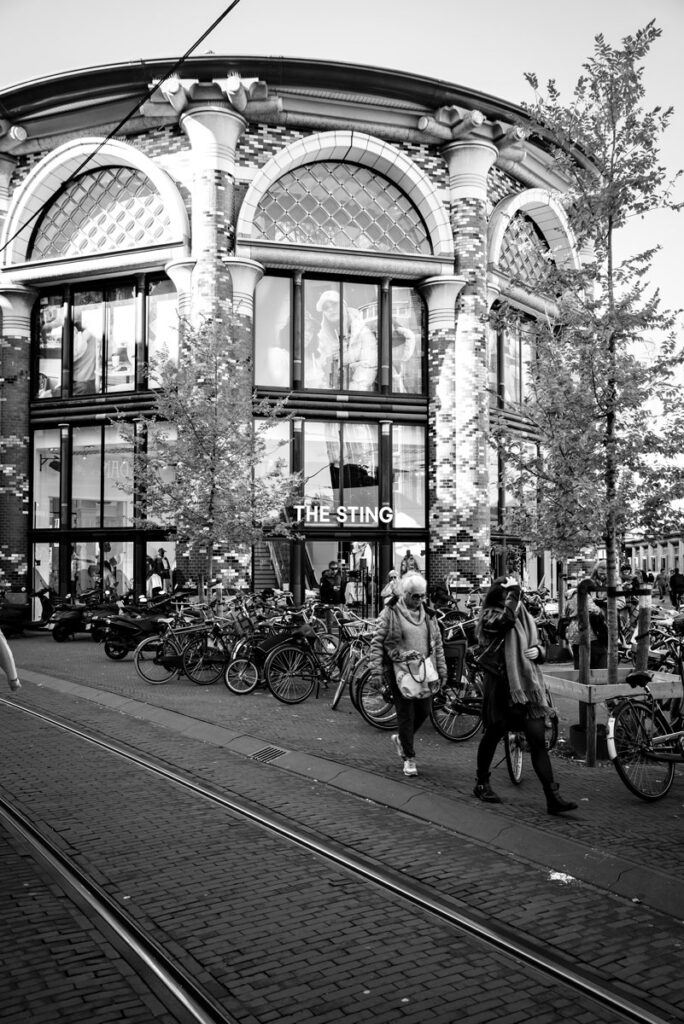
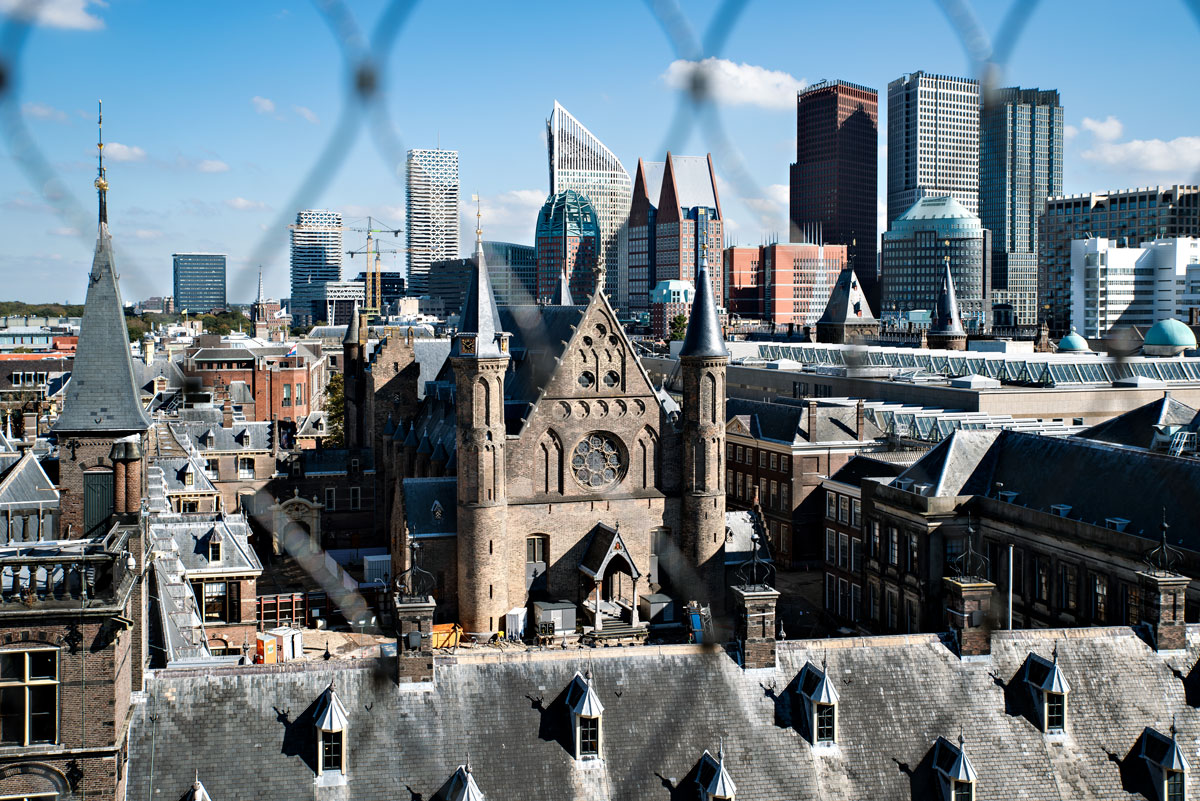
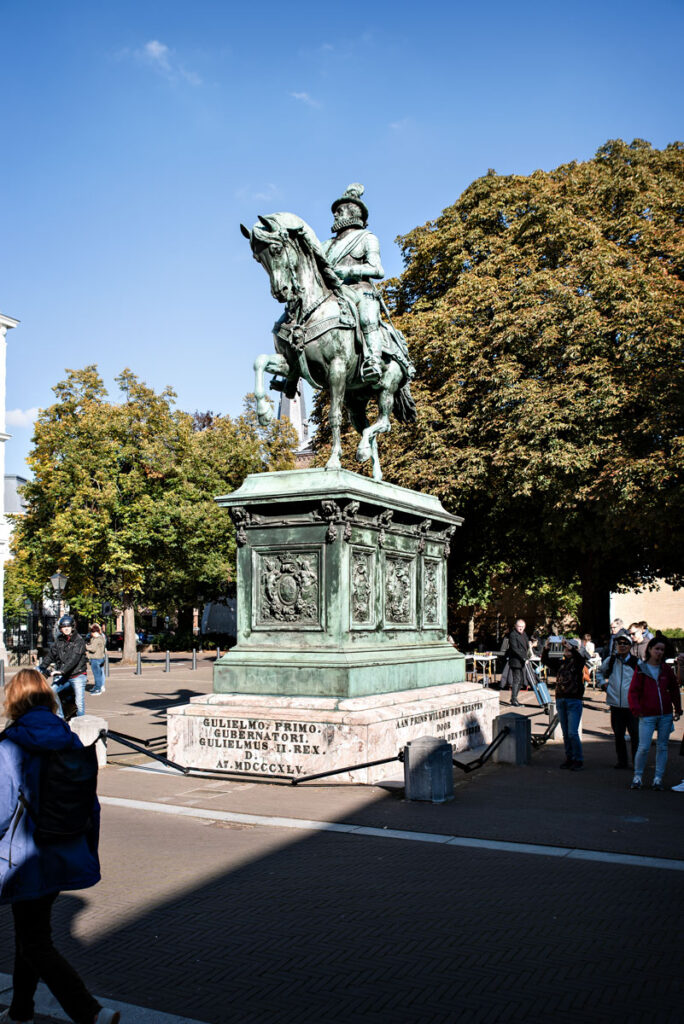
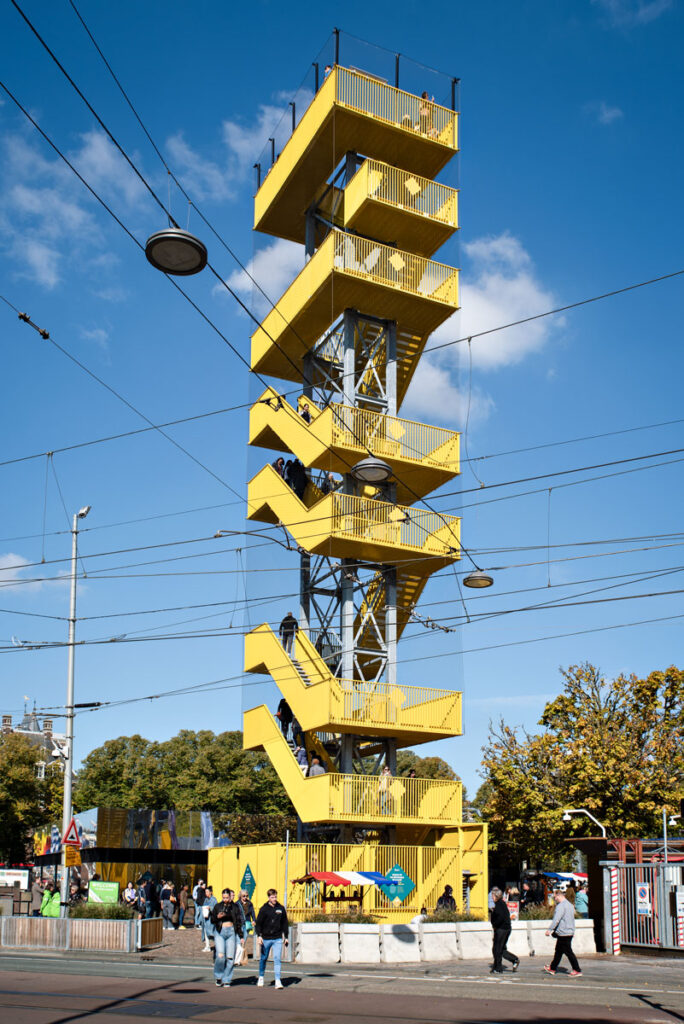
The city beach in The Hague is too crowded for us, so we head for the tranquil, long beach near Katwijk aan Zee. There’s a café and a handful of vacation huts here. Sand and dunes behind it. The North Sea as you would imagine it. Offshore wind turbines stand pale on the horizon, even further out, small container ships disappear. Not the palm-fringed tropical beaches we are used to. A cold wind blows around our ears here. Two girls venture into the ice-cold sea. We hear their happy cries. Our little man eagerly collects shells, then he too discovers the sea for himself. The recurring waves give him great pleasure.
We enjoy another coffee, sheltered from the wind and wrapped up warm, with a view of the open sea. Whether it’s tropical warm or North Sea humid: The sea is still the sea – and it’s always worth a trip.
We take a small, sandy path through the dunes to our campsite. The sun is already casting its orange-blue light on the sand hills and dune grass. Boys are setting off fireworks in secret. A group of German tourists enjoy the sunset with good humor and homemade schnapps.
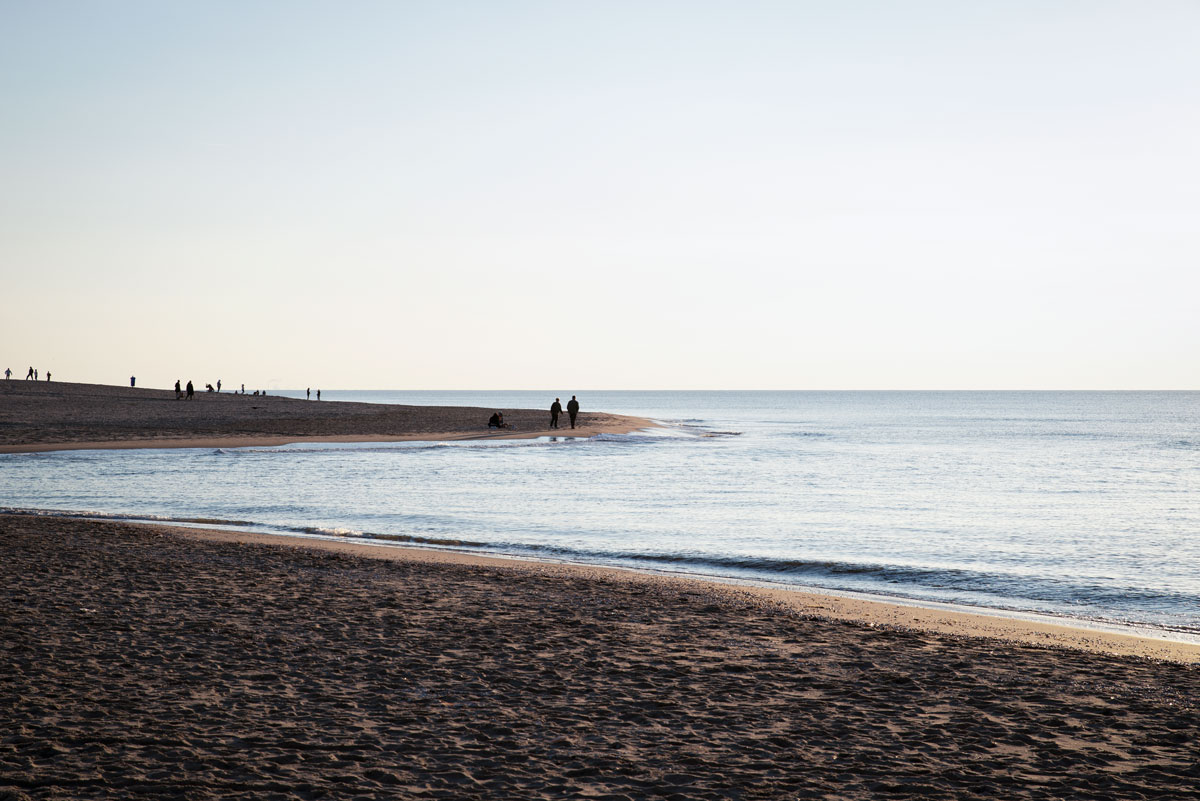
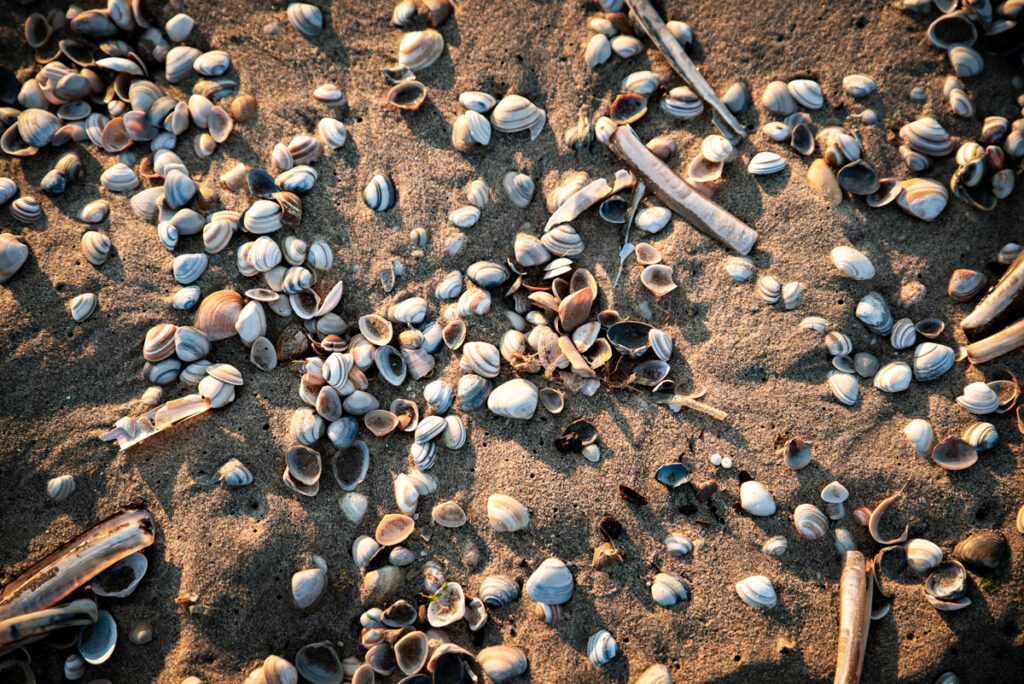
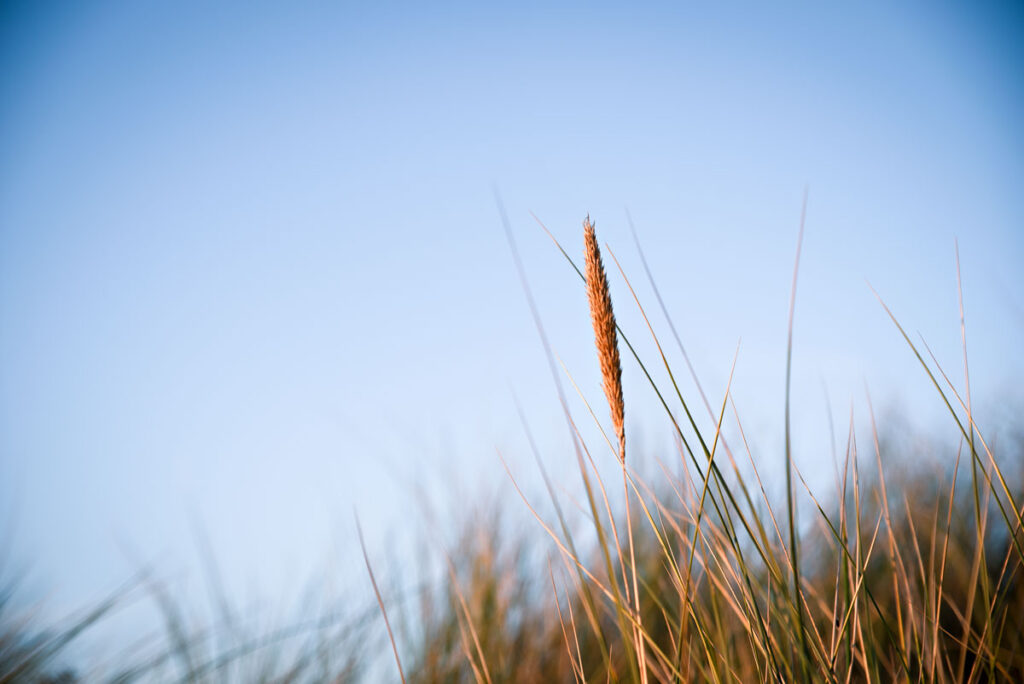
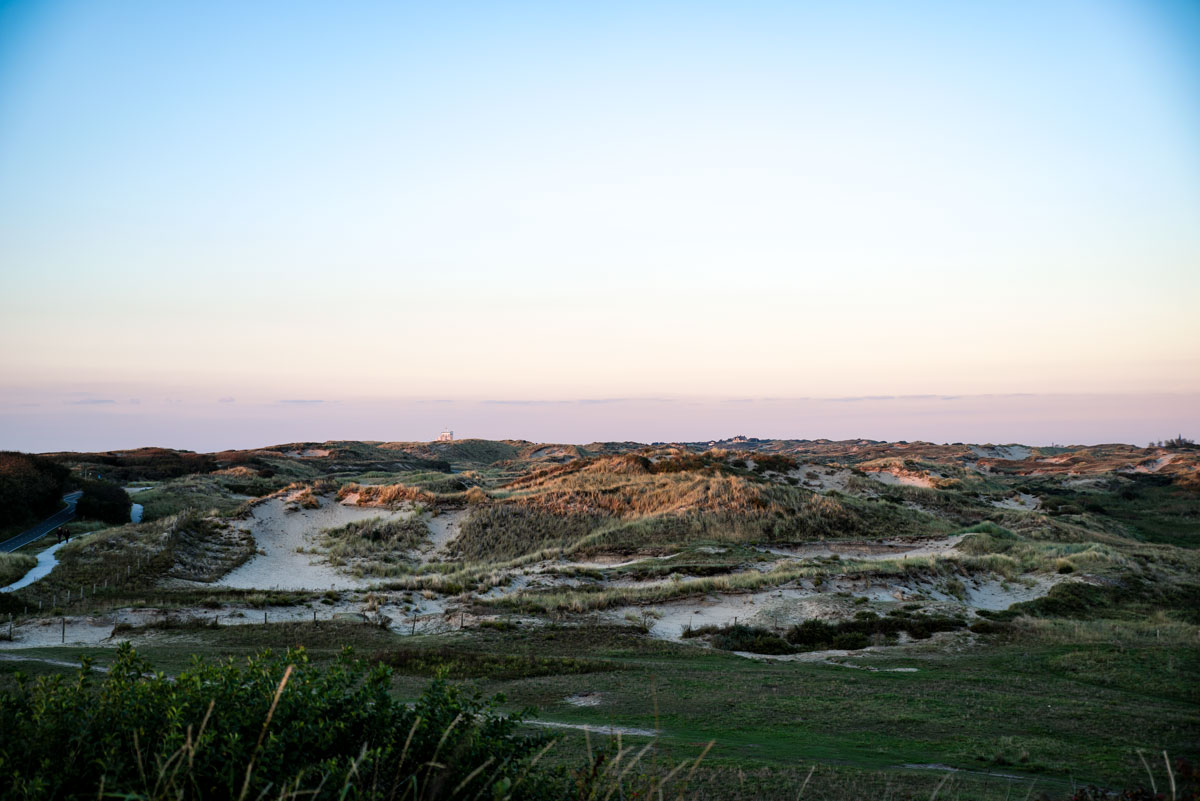
We set off early the next morning in the direction of home. We talk about what we have experienced and our impressions of the past few days. We have seen more than we expected in such a short time. There was just one thing missing from our all-round Dutch experience: a picture of a windmill. Vany doesn’t hesitate for long: a quick look at Google Maps, the next exit and a short detour through scenic villages past small canals and cow pastures. With the first rays of sunshine of the day, we finally reach it: our windmill. Picturesquely situated on a lake, just as we had imagined it. We let the drone fly and are amazed by the colors of the sky. A group of geese has noticed us. They shake the sleep from their feathers and take to the skies.
Our trip to this inconspicuous yet beautiful country could not have come to a better end.
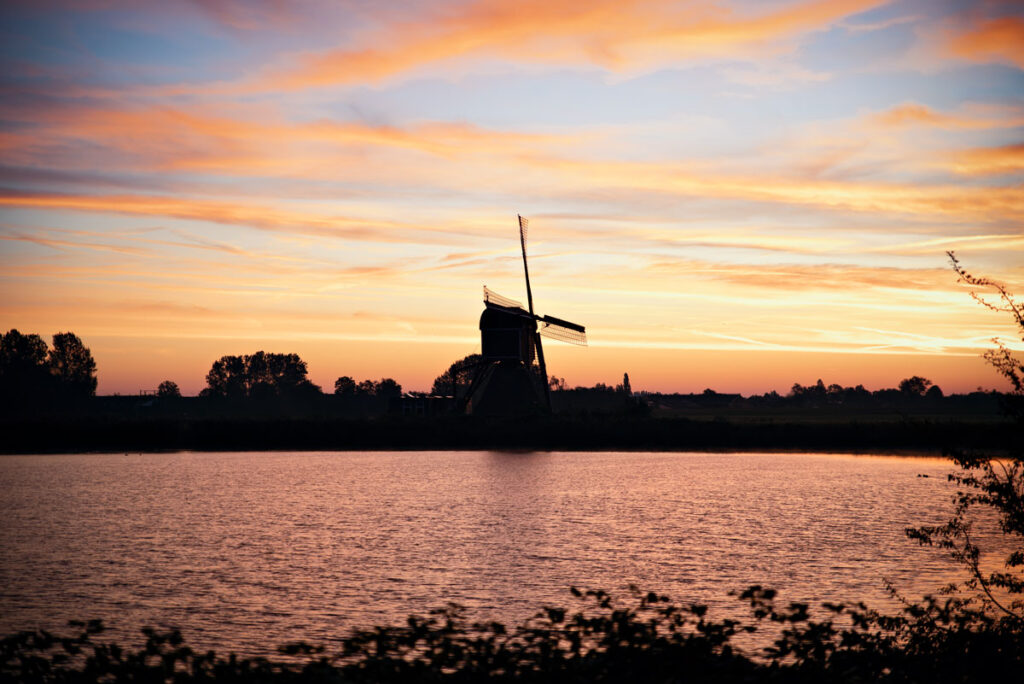

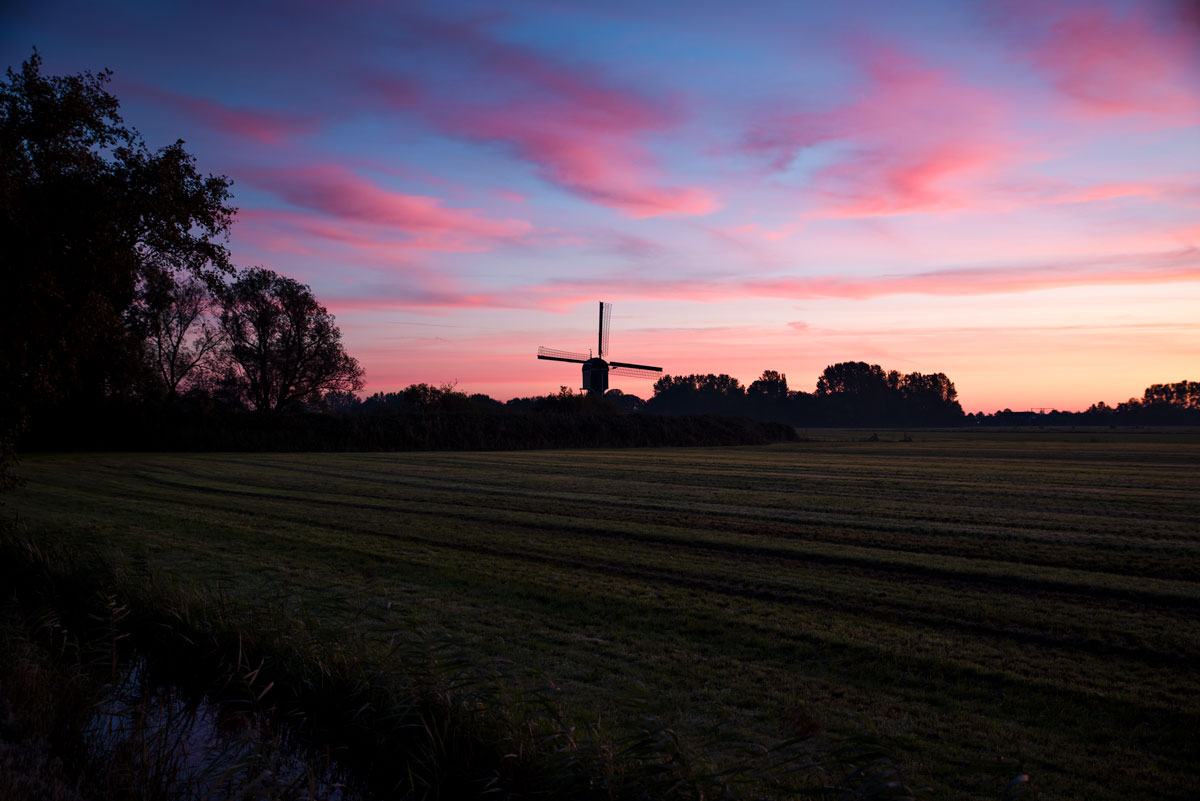
In the few days we spent traveling through the Netherlands, we naturally only scratched the surface of this little corner of the world. And yet we got to know different facets. The short time was enough to make us fall in love with the uncomplicated and cheerful nature of the Dutch, the idyllic landscapes and romantic little towns as well as the bold urban planning. There are certainly many other places, especially smaller ones, that are worth a visit. Fortunately, it’s not too far to the neighboring country of Germany.
Info about our trip
For our needs, the Netherlands is the perfect country for a short trip. Short distances and a high density of places worth seeing. Even the capital Amsterdam is easy to explore in one day. The prices are on our level, contactless payment is possible everywhere and most Dutch people speak very good English – if not even German.
However, a trip lasting several weeks – for example a two-week summer vacation on the North Sea – would be unimaginable for us. The Netherlands is too densely populated and has too little to offer us in the way of people-free nature and vast landscapes in the long term. If you don’t want to spend the night on a campsite, you have to rely on the rather expensive hotels. As well-equipped as the Dutch campsites may be, they would not be an option for us for longer stays.
Of course, the Netherlands have a certain bourgeois romanticism: tulip fields, windmills at sunset, beach cafés and canals are things we have previously associated with coffee trips and senior citizens traveling by bus. But what we liked most were the simple villages we drove through. Spacious brick buildings with a rather English charm, a refreshing change from the German bunker architecture of the new housing estates sprouting up from the ground.
Prices in the Netherlands are roughly on a par with those in Germany. In our opinion, this actually applies to all areas.
Dutch cuisine is characterized by simplicity, down-to-earthness and regional influences. Traditional dishes are often hearty and greasy. At the top of the list of regional specialties is, of course, cheese. Edam, Maasdam, Limburger, Gouda … You’ll find well-stocked cheese stores all over the country where you can try them all. A very popular snack is Bitterballen – small meatballs that are eaten with mustard. They are often accompanied by beer – in the Netherlands, people like to drink a lot of beer anyway. Here, too, there are excellent varieties. Other dishes on the menu include fish (herring) and fried food.
Perhaps it was due to the public holiday and the long weekend in Germany, but the prices for hotel accommodation throughout the Netherlands were off the charts. The cheapest accommodation starts at around 70-80 euros. Expect to pay at least 100-120 euros per night. For nice accommodation close to the city center, you’re probably looking at 200 euros upwards.
Campsites are the best alternative. You will pay around 20-30 euros per night for a pitch. The Netherlands is the motorhome country par excellence, and the campsites are correspondingly well-equipped. Everywhere we stayed, there were spacious cooking facilities, clean sanitary facilities and in some cases also lounges, which are worth their weight in gold, especially in winter.
We stayed at the following campsites:
- Siebieverden near Doesburg – great campsite with large grass pitches, children’s playground, clean sanitary facilities and spacious recreation room with kitchen
- Camping Zeeburg Amsterdam – close to the city and well-equipped, but very large and impersonal
- Molecaten Park Noordduinen – we didn’t like this site at all, too big and labyrinthine, plus some of the pitches are very earthy and the paths are long
We perceived the Netherlands to be very safe. The crime rate is so low that there were even reports of prison closures a few years ago. In Amsterdam alone, you should exercise a little more caution.
When we ask friends and acquaintances with children where they would like to spend their next summer vacation, we often get the answer “the Netherlands”. There may be many reasons for this: first of all, the excellent infrastructure and the short journey. There is hardly any crime, excellent medical care and a campsite is a great place to spend a vacation as a family of five – the sea is free. Other advantages: Dutch food is child-friendly, the German SIM card can be used, the euro is the main currency (or you can pay contactless by card or cell phone), the Dutch are friendly and uncomplicated and there are plenty of leisure activities. Sightseeing, city tours, culture, swimming, beach days, all kinds of water sports, hiking, cycling, museum visits … the list goes on and on. Yes, the Netherlands is certainly the perfect family destination.
In principle, you can get to the Netherlands in every conceivable way. If you are focusing on Amsterdam and other major cities, we recommend traveling by train. There are good connections to and from Germany. If you are staying on campsites, you will probably be traveling by car or camper. Although the roads throughout the country are toll-free, you should definitely avoid driving into the cities in your car or camper van. Parking tickets are very expensive (sometimes double-digit amounts per hour) and the roads are narrow – it is not uncommon to share a lane with oncoming traffic in favor of wide and safe cycle paths. So use public transport to get to the city centers.
- Ulrike Grafberger has written a somewhat different travel guide with Holland für die Hosentasche: Was Reiseführer verschweigen
- If you want to delve deep into Dutch history, Christoph Driess Geschichte der Niederlande: Von der Seemacht zum Trendland is just the book for you
